
Which golf club to use?
Which golf club to use?
A Comprehensive Guide on Which Golf Club to Use
Embarking on your golf journey? Understanding the purpose of each golf club is fundamental for success on the course. In this detailed guide, we’ll delve into the intricacies of different golf clubs, their designs, and when to strategically use them. Welcome to Golf For Beginners Academy’s exploration of “Which golf club to use?”
The Mighty Driver
The driver, a club designed for maximum distance, plays a pivotal role in setting the stage for a successful hole.
Purpose of the Driver: The driver is primarily used for tee shots on par-4s and par-5s, providing the maximum distance off the tee.
Clubhead Design: Recognizable by its oversized clubhead, the driver’s large sweet spot enhances forgiveness, allowing for more distance even on off-center hits.
When to Use: Opt for the driver on long and open holes where distance is crucial. Tee shots on par-4s and par-5s are ideal scenarios for unleashing the power of the driver.

Navigating Fairway-Woods
Fairway-woods serve as versatile clubs designed for both distance and control, offering alternatives to the driver
Purpose of Fairway-Woods: Fairway-woods are designed for long shots from the fairway, providing a balance between distance and accuracy.
Clubhead Design: With a shallower profile than the driver, fairway-woods have a lower center of gravity, promoting a higher launch trajectory.
When to Use: Opt for fairway-woods when faced with long shots from the fairway, or when needing to navigate through challenging fairway or rough terrain.
The Versatility of Hybrids
Hybrids blend the characteristics of irons and fairway-woods, offering forgiveness and ease of use.
Purpose of Hybrids: Hybrids are versatile clubs designed to replace difficult-to-hit long irons. They provide a combination of distance, accuracy, and playability.
Clubhead Design: With a design resembling both irons and fairway-woods, hybrids typically feature a larger clubhead and a lower center of gravity.
When to Use: Utilize hybrids in situations where a balance of distance and control is required, especially in scenarios where long irons might pose challenges.

The Backbone of the Bag - Irons
Irons, numbered from 3 to 9, are designed to cover a range of distances and play a crucial role in approaching the green.
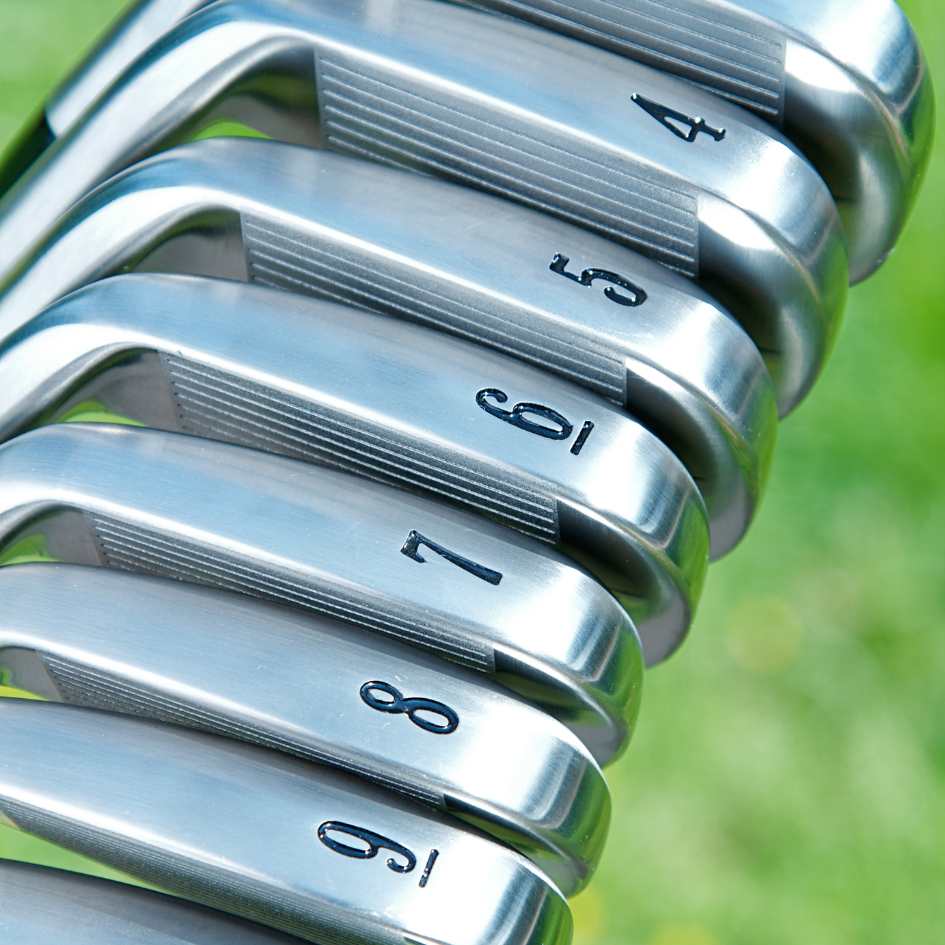
Purpose of Irons: Irons are used for approach shots, providing precision and control to land the ball on the green.
Clubhead Design: Irons have a thinner profile compared to woods, with clubheads featuring varying degrees of loft for different distances.
When to Use: Choose irons based on the required distance for approach shots. Lower-numbered irons (3-5) are ideal for longer shots, while higher-numbered irons (6-9) are suitable for shorter approaches.
Wedges - Precision in Scoring
Wedges, including the pitching wedge, gap wedge, sand wedge, and lob wedge, are specialized for short-distance shots around the green.
Purpose of Wedges: Wedges are designed for precise control over short shots, including pitches, chips, and bunker play.
Clubhead Design: Wedges have a high loft, allowing for a steeper angle of descent and greater spin control.
When to Use: Employ wedges for shots within 120 yards of the green, as well as when faced with challenging lies, bunkers, or the need for precise control.
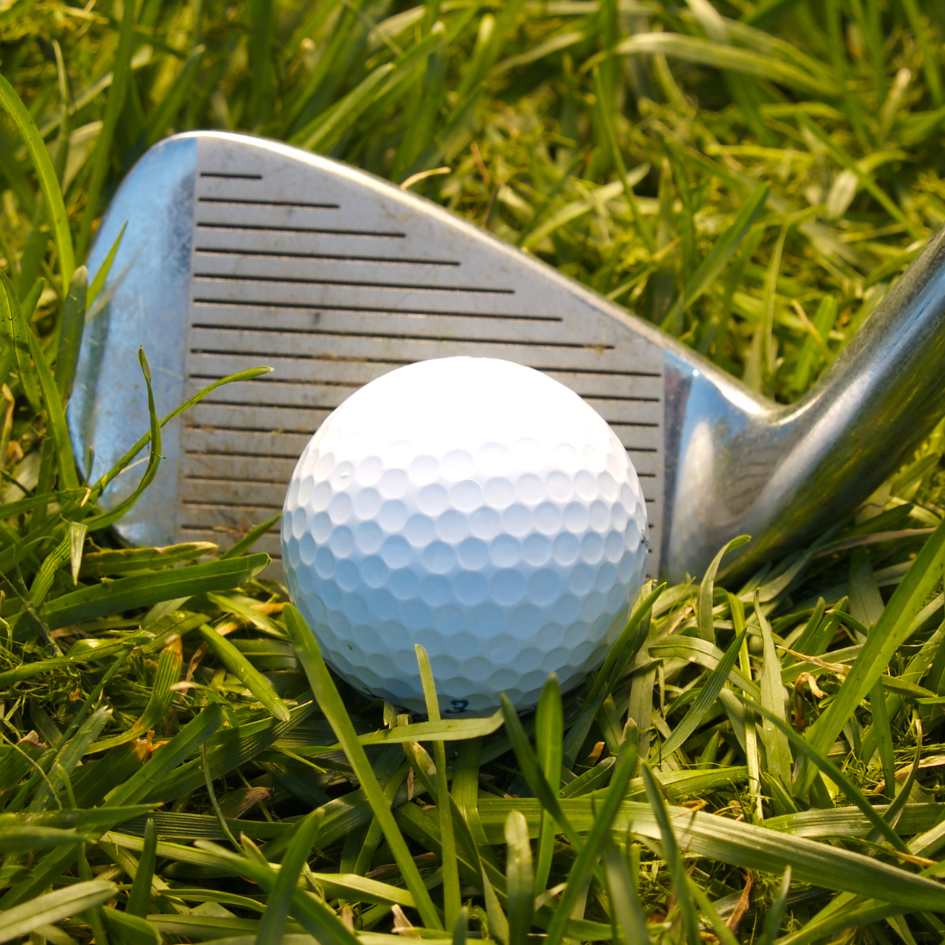
Putting - The Art of the Putter
The putter, the final touch in completing each hole, is designed for precision and control on the greens.

Purpose of the Putter: The putter is used on the green for short and controlled strokes to roll the ball into the cup.
Clubhead Design: Putters have a flat, low-profile clubhead with various designs to suit different putting preferences.
When to Use: Use the putter on the green to complete the hole. It is essential for precision in short-range putts.
Want to learn even more? Listen to our Podcast!⛳️
Ready to Take the Next Step? ⛳️
Are you eager to dive deeper into golf’s intriguing world and master the ins and outs of the game? Look no further than our “Golf For Beginners – The Ultimate Starter Guide.” Whether you’re a newbie or just brushing up on your skills, this online course has something for everyone.

Conclusion on Which golf club to use
Congratulations! You’ve navigated through our comprehensive guide on “Which golf club to use?” As you continue your golf journey, remember that each club in your bag has a specific purpose. Golf For Beginners Academy is here to support you every step of the way. Tailor your club selection to the demands of the course, refine your skills, and enjoy the versatility and precision each club brings to your game. Happy swinging!
Du you want more detailed help with you game of golf, and specifically about the short game of golf? Our partner-portal called World Of Short Game deliver great content for all short game related topics. Click here to visit World Of Short Game.
And if you live in Denmark, never hesitated to reach out to Danish Golf Academy for help with any part of your game.
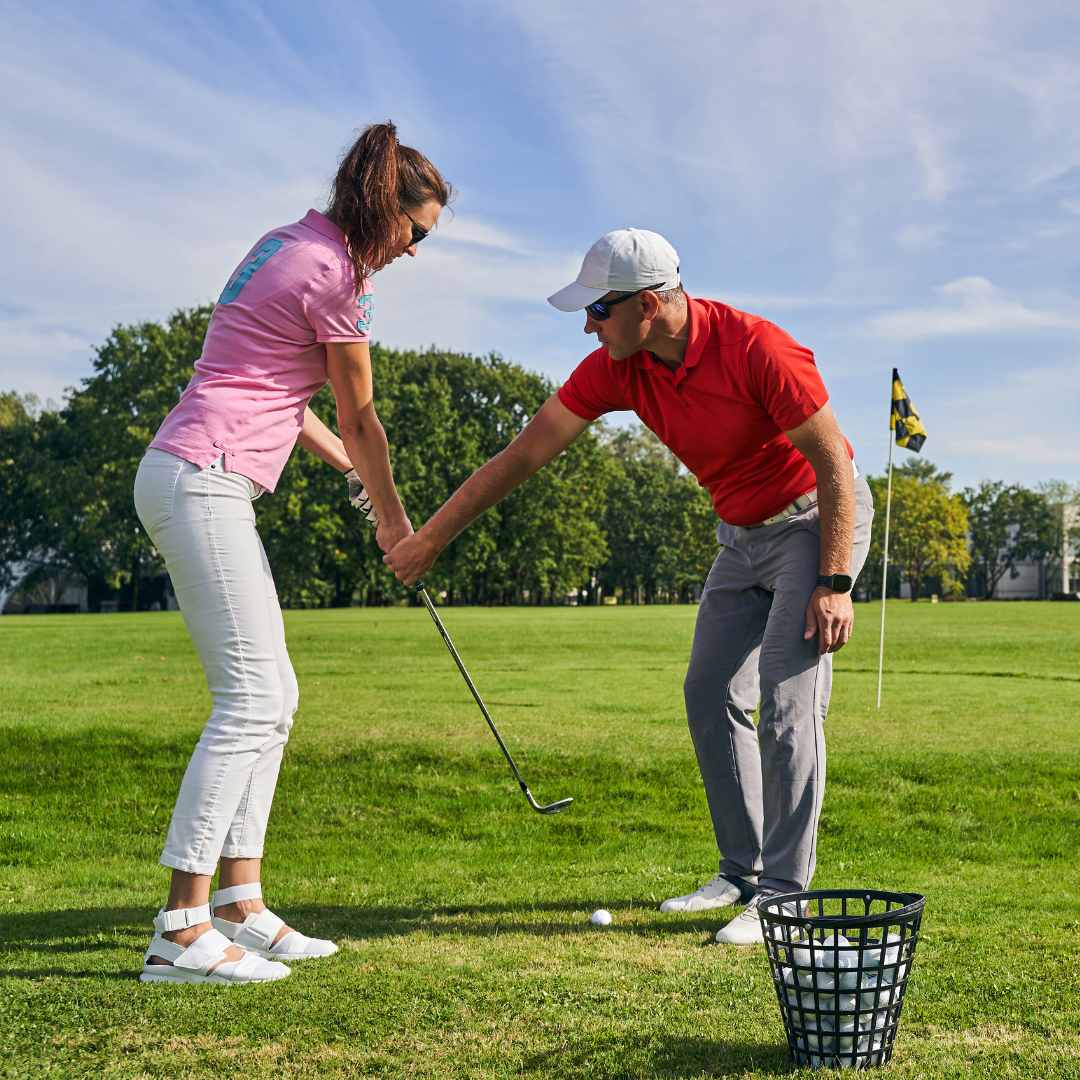
25 Best Golf Tips for Beginners
25 Best Golf Tips for Beginners
Mastering the Greens: In-Depth Best Golf Tips for Beginners
Embarking on your golfing journey? Golf For Beginners Academy has you covered with a detailed guide featuring essential tips tailored for novice players. Let’s dive into each section for a comprehensive understanding of golf tips for beginners.
The Fundamentals of Golf - Section 1
Proper Grip and Stance: Achieve a strong foundation by mastering your grip and stance. A neutral grip and balanced stance provide stability, ensuring a controlled and powerful swing.
Understanding Club Selection: Learn the basics of club selection based on the distance and shot requirements. Familiarize yourself with the different types of clubs and their specific uses.
Swing Basics: Focus on a fluid and balanced swing. Practice your backswing, downswing, and follow-through to create a consistent and efficient motion that improves accuracy.
Ball Positioning: Understand the importance of proper ball positioning for different shots. Master the alignment of the ball in your stance to optimize trajectory and contact.
Developing a Pre-Shot Routine: Establish a pre-shot routine to enhance your focus and consistency. This routine can include visualizing your shot, checking alignment, and taking a few practice swings.

Want to learn more about the swing?
Listen to our podcast!
Mastering the Short Game - Section 2
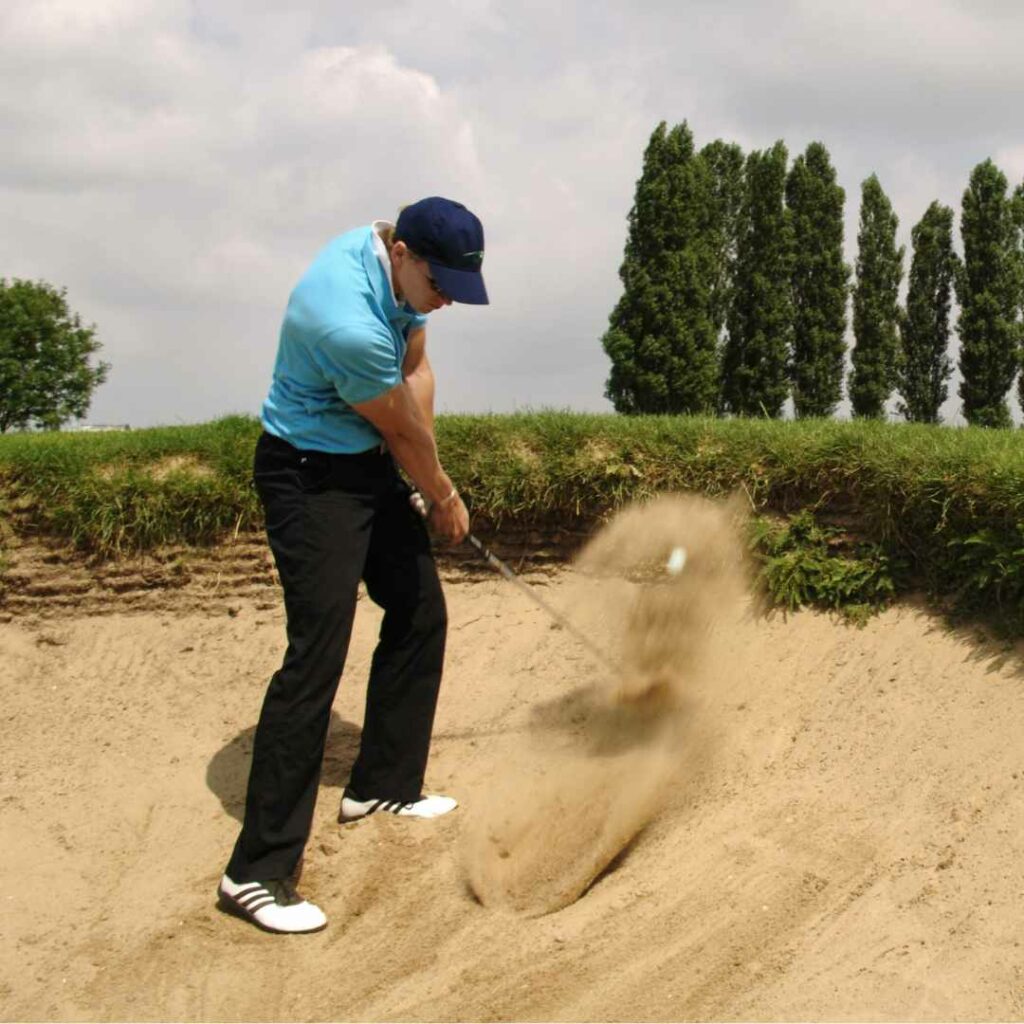
Putting Precision: Hone your putting skills by focusing on distance control, alignment, and a smooth stroke. The short game is often where strokes can be saved or lost.
Chipping Techniques: Practice various chipping techniques for shots around the green. Learn how to control trajectory and spin to get the ball close to the hole.
Pitching Perfection: Develop your pitching skills for shots that require more loft. Mastering the pitch shot is crucial for navigating obstacles and landing the ball softly on the green.
Bunker Play: Understand the fundamentals of bunker play, including the proper setup, swing, and strategy for getting out of sand traps efficiently.
Reading Greens: Improve your ability to read greens by understanding the slope, grain, and nuances of the putting surface. Accurate green reading is key to successful putting.
Course Management Strategies - Section 3
Playing Within Your Abilities: Recognize your skill level and play within your abilities. Avoid unnecessary risks and focus on making consistent shots to improve overall performance.
Strategic Club Choices: Develop a strategic approach to club selection based on the layout of the course. Choose clubs that allow you to navigate hazards and position yourself for the next shot.
Understanding Par: Familiarize yourself with the concept of par and set realistic expectations. Aim to play within or slightly above par, focusing on steady improvement.
Pace of Play: Respect the pace of play on the course. Be mindful of your group’s speed, maintain a reasonable pace, and be ready for your turn to keep the game enjoyable for everyone.
Course Awareness: Stay aware of the course layout and potential challenges. Knowing where hazards, bunkers, and doglegs are located helps you plan and execute more successful shots.

Mental Game and Focus - Section 4

Maintaining a Positive Mindset: Cultivate a positive attitude on the course. Overcome challenges with resilience, focusing on learning from each shot rather than dwelling on mistakes.
Visualization Techniques: Harness the power of visualization to enhance your performance. Picture successful shots in your mind before executing them to boost confidence.
Breathing and Relaxation: Incorporate deep breathing and relaxation techniques to stay calm under pressure. Managing stress enhances your ability to make clear decisions on the course.
Handling Setbacks: Learn to bounce back from setbacks and mistakes. Resilience is a crucial trait in golf, and the ability to recover from a bad shot is essential for long-term success.
Staying Present on the Course: Practice staying in the moment during your round. Avoid dwelling on past shots or worrying about future ones. Focus on the task at hand to improve overall performance.
Continuous Improvement and Resources - Section 5
Effective Practice Habits: Maximize your practice sessions with focused drills and exercises. Target specific areas of your game that need improvement and track your progress over time.
Golf Lessons and Professional Guidance: Consider taking golf lessons from a certified instructor. Professional guidance helps identify areas for improvement and provides personalized feedback.
Utilizing Technology: Leverage golf technology, such as swing analysis apps and launch monitors, to gain insights into your swing mechanics and track performance metrics.
Joining a Golf Community: Connect with other golf enthusiasts by joining a local golf community or club. Networking with fellow players provides opportunities for friendly competition and shared learning.
Staying Informed: Stay informed about the latest trends, techniques, and equipment in the golfing world. Subscribe to golf publications, follow reputable online resources, and attend golf expos for continuous learning.
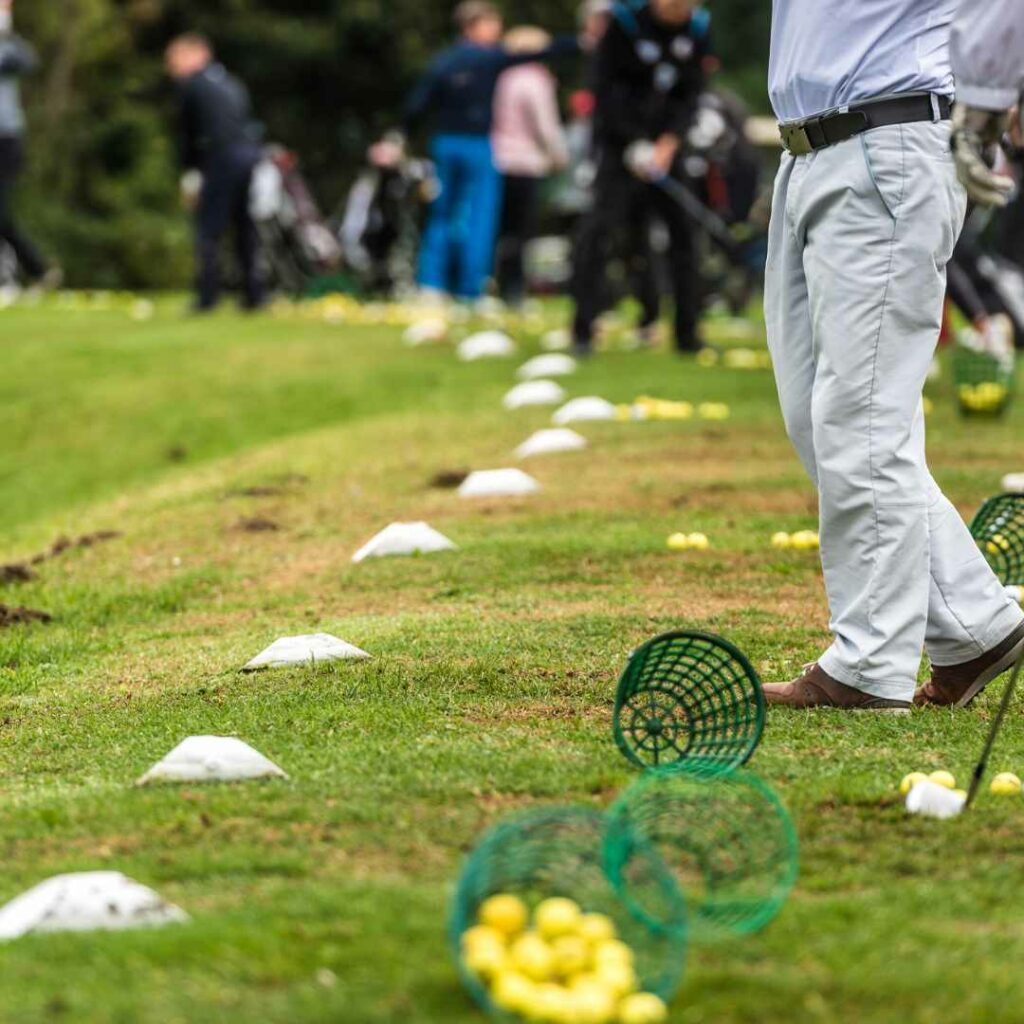
Ready to Take the Next Step? ⛳️
If you’re eager to dive deeper into golf’s intriguing world and master the ins and outs of the game, look no further than our “Golf For Beginners – The Ultimate Starter Guide.” Whether you’re a newbie or just brushing up on your skills, this online course has something for everyone.
⛳️ Discover the Ultimate Golf Starter Guide Right Here ⛳️
Conclusion on the 25 Best Golf tips for beginners
Congratulations! You’ve navigated through our comprehensive guide on golf tips for beginners. Remember, mastering golf is a continuous journey of improvement. Apply these tips, stay dedicated to your practice, and enjoy the evolving experience of becoming a skilled and confident golfer. Golf For Beginners Academy is here to support you every step of the way. Happy golfing!
Did You Like The 25 Best Golf Tips For Beginners?
If you want more detailed help with you game of golf, and specifically about the short game of golf, our partner-portal called World Of Short Game deliver great content for all short game related topics. Click here to visit World Of Short Game.
And if you live in Denmark, never hesitated to reach out to Danish Golf Academy for help with any part of your game.
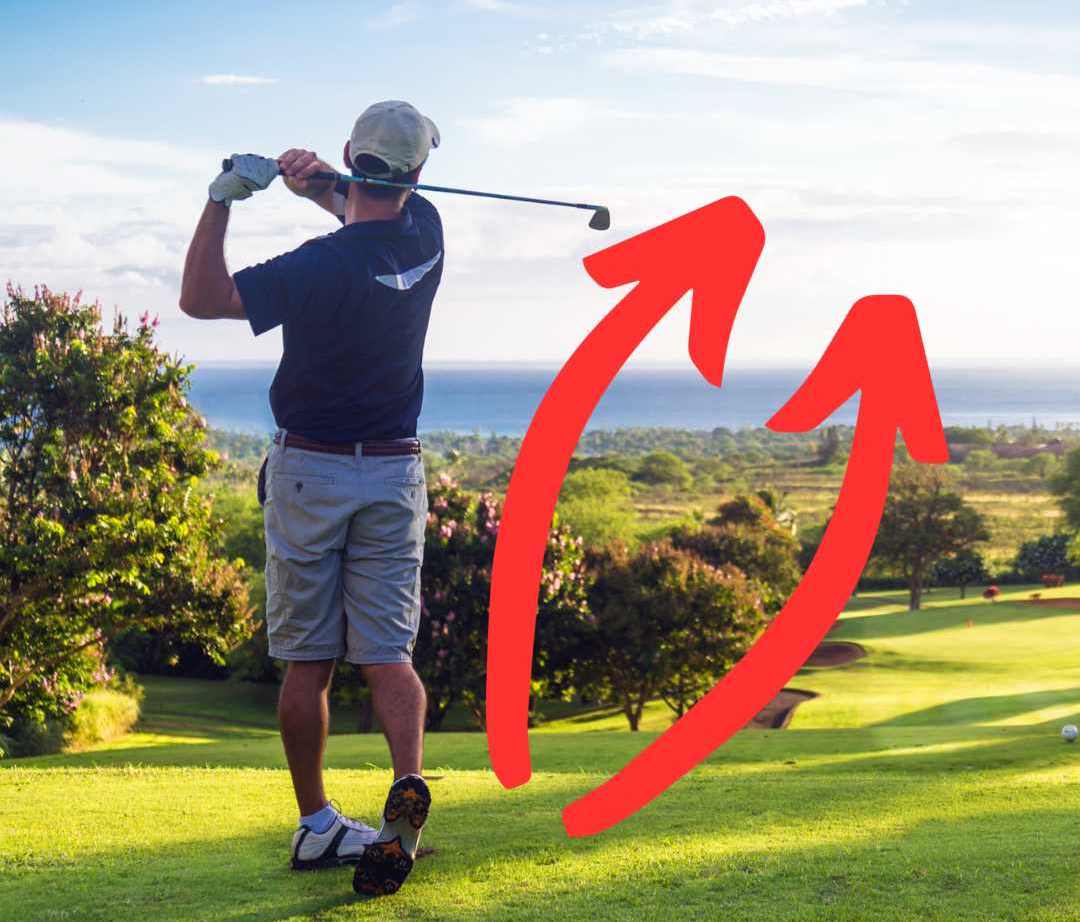
What’s the difference between a fade and a draw?
What's the difference between a fade and a draw?
The Art of Curving the Ball
Greetings, golf aficionados! If you’ve ever marveled at the magic of curving a golf ball in flight, you’ve likely heard of two terms: fade and draw. These are like the secret handshakes of golfers, allowing you to shape your shots with precision. This guide is your ticket to unraveling the mystery of fades and draws in a way that’s as enjoyable as sinking a birdie putt. So, grab your clubs, and let’s dive into the world of shot shaping in golf!
Meet the Fade and the Draw
Before we explore the techniques, let’s get to know our golfing buddies:
Fade: A fade is a shot that curves gently from left to right (for right-handed golfers) or right to left (for lefties). It’s like a controlled drift in the breeze.
Draw: On the other hand, a draw is a shot that curves slightly from right to left (for righties) or left to right (for left-handed golfers). It’s the art of making the ball dance.
The Fade: Sculpting the Sky
Grip Adjustment: To hit a fade, slightly weaken your grip. This means rotating both hands a bit to the left (for righties). It encourages an open clubface at impact.
Stance Alignment: Aim slightly left of your target (for righties) to accommodate the fade’s left-to-right curve.
Swing Path: Swing along your body line but slightly from outside to inside. This promotes a left-to-right spin on the ball.
The Draw: Painting the Fairway
Grip Adjustment: To create a draw, strengthen your grip slightly. This means rotating both hands a bit to the right (for righties). It encourages a closed clubface at impact.
Stance Alignment: Aim slightly right of your target (for righties) to allow for the draw’s right-to-left curve.
Swing Path: Swing along your body line, but this time, slightly from inside to outside. This imparts a right-to-left spin on the ball.
Hidden Gem: "Golf For Beginners - The Ultimate Starter Guide"
Ready to take your shot shaping skills to the next level? Our online course, “Golf For Beginners – The Ultimate Starter Guide,” delves deep into fades, draws, and so much more. Whether you’re just starting or aiming to refine your skills, this course is your gateway to golfing mastery. Eager to learn?
⛳️ Discover the Ultimate Golf Starter Guide Right Here ⛳️
Shape Your Game, Shape Your Destiny
Fades and draws are the strokes of artists on the golf course, allowing you to navigate around obstacles and make that ball dance to your tune. Whether you’re painting the sky with a fade or sculpting the fairway with a draw, these techniques add flair to your game. So, practice, experiment, and let the fairways become your canvas for golfing brilliance!
If you want more detailed help with you game of golf, and specifically about the short game of golf, our partner-portal called World Of Short Game deliver great content for all short game related topics. Click here to visit World Of Short Game.
And if you live in Denmark, never hesitated to reach out to Danish Golf Academy for help with any part of your game.

What Golfclub to Use for What Distance
What Golfclub to Use for What Distance
A Golfer's Secret Recipe: Choosing the Right Clubs for Every Distance
What Golfclub to Use for What Distance?
The greens beckon, the sun’s glow is promising, and your heart beats with excitement. But here’s the real question – do you have the secret recipe for selecting the perfect golf club for every distance? Welcome to the game of strategy, precision, and a touch of wizardry. Today, we’re unlocking the vault of club selection wisdom, sprinkled with a dash of fun and a pinch of practicality. So grab your clubs and let’s cook up a masterpiece on the golf course!
Know Thy Distances: The First Ingredient
Picture this: you’re stepping onto the tee, ready to conquer the world one swing at a time. But hold on – before you unleash that power, you need to know exactly how far you can hit each club in your arsenal. Take some time on the practice range to understand the yardage you can achieve with your driver, fairway woods, irons, and wedges. This knowledge is your secret sauce, your foundation for what’s to come.
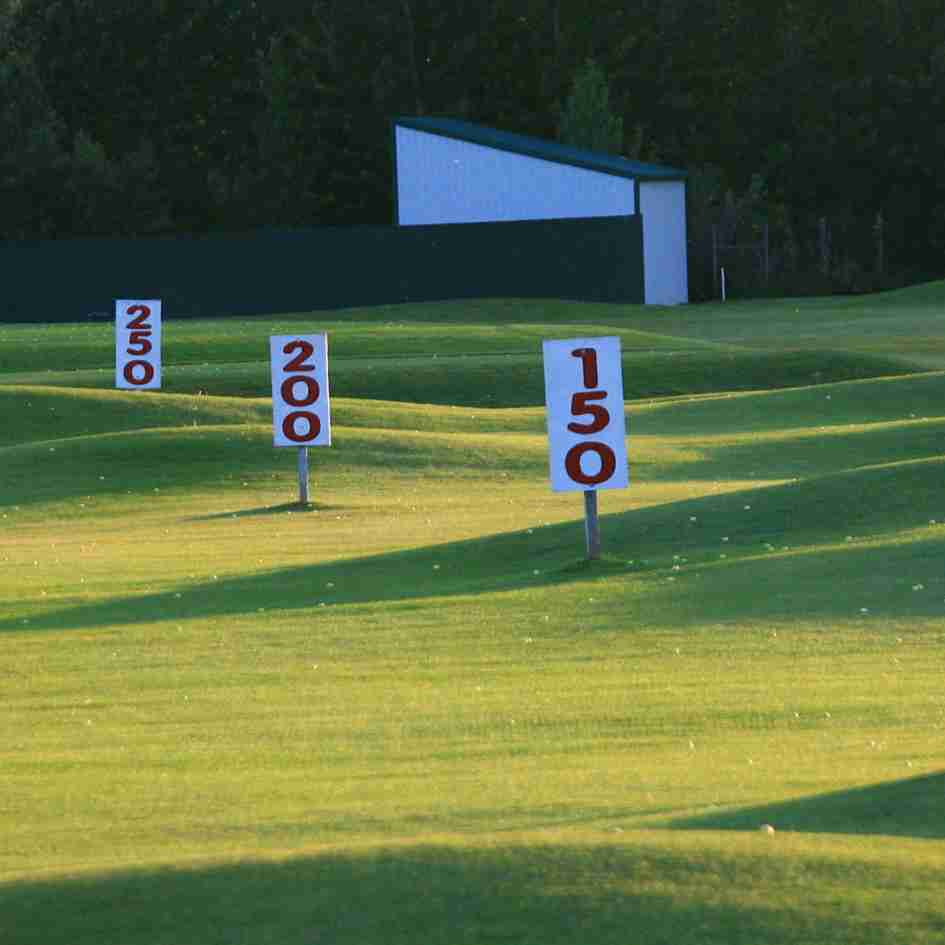
On the Course: Adding a Pinch of Precision

As you stride onto the course, your mastery of distances comes into play. Each shot is a puzzle, and the pin is your target. Before you take your swing, assess the distance from your ball to the pin. This information guides your club selection – it’s like picking the right tool for the job. Don’t be shy to use a rangefinder or GPS watch to get accurate measurements.
The Wind and Elevation Twist: A Sprinkle of Challenge
Now, let’s add some spice to the mix. Wind and elevation – the dynamic duo that can turn a straightforward shot into an exciting challenge. Feel the breeze on your skin, watch the trees sway – the wind is your golfing companion. A headwind can knock your ball back, while a tailwind can give it wings. Elevation changes add an extra layer – shots uphill need more power, while downhill shots demand finesse.

The Perfect Recipe: Putting It All Together

Imagine you’re on the 8th hole. The pin is 150 yards away. You consult your mental cookbook – your driver reaches about 220 yards, but there’s a headwind. The uphill terrain adds complexity. Time to think. You grab your trusty 6-iron, knowing it’s your sweet spot for this distance. With a smooth swing, you send the ball soaring, accounting for the wind. The result? A shot that lands just where you aimed.
Unlock Your Golfing Potential: The Hidden Ingredient ⛳️
Becoming a club selection maestro takes practice, but it’s worth every moment. And to fast-track your journey to golfing excellence, consider exploring our online course – “Golf For Beginners – The Ultimate Starter Guide.” This course is your secret ingredient to unlocking the full potential of your swing. Curious? Take a sneak peek and discover the treasure trove of knowledge that awaits!
⛳️ Discover the Ultimate Golf Starter Guide Right Here ⛳️
Conclusion on What Golfclub to Use for What Distance?
As you savor the joy of every swing, remember that golf is both an art and a science. Your ability to choose the right club for the right distance, factoring in wind and elevation, elevates your game to new heights. Like a master chef crafting a gourmet meal, you’re crafting your golfing success with every calculated swing. So, swing with confidence, savor the journey, and let your club selection prowess shine on the greens!
Did you like: "What Golfclub to Use for What Distance?"
If you want more detailed help with you game of golf, and specifically about the short game of golf, our partner-portal called World Of Short Game deliver great content for all short game related topics. Click here to visit World Of Short Game.
And if you live in Denmark, never hesitated to reach out to Danish Golf Academy for help with any part of your game.
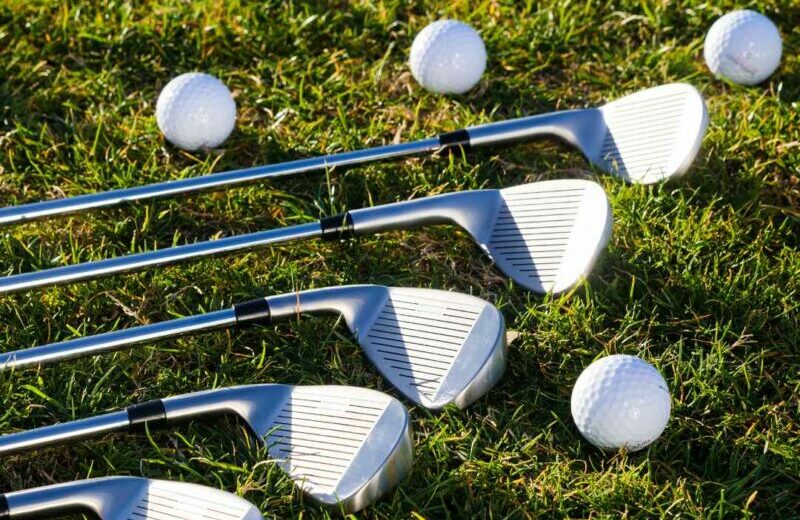
Golf Club Distances: From Tee to Green Mastery
Deciphering Golf Club Distances: From Tee to Green Mastery
Mastering Golf Club Distances – A Swing Towards Precision
Imagine the thrill of standing on the tee, the lush fairways stretching ahead, and the promise of a perfect swing. But before you embark on your golf journey, there’s a strategic secret you must unravel – matching the right golf club to the right distance. Dive into this captivating guide that weaves together stats, distance insights, and the wizardry of swing selection. Let’s swing into action and decode the art of golf club distances!
Tee-Off Delight: Aiming for the Skies with Perfect Distance
The tee-off – a canvas for showcasing your power and precision. Meet the driver, your trusty companion for launching your ball into the green expanse. On average, gentlemen can achieve distances between 230 to 290 yards, while ladies gracefully cover 200 to 240 yards.
But here’s the beauty of knowledge. For beginners, these numbers might hover around 230 yards for men and approximately 200 yards for women. As skills evolve, intermediate players might reach 260 yards for men and 220 yards for women. And for the pros? They might effortlessly reach an astounding 290 yards for gents and a splendid 240 yards for ladies.

Fairway Wizardry: Navigating Distances with Finesse

Once you’re past the tee, fairway woods and hybrids become your strategic companions. These clubs offer the sweet spot between 170 to 220 yards for men and 150 to 200 yards for women.
The secret sauce? Experience adds its own flair. Beginners might find their groove at around 170 yards for men and 150 yards for women. As your golf story progresses, intermediate players embrace 190 yards for men and 170 yards for women. As for the pros? Their fairway prowess can span up to 220 yards for gentlemen and 200 yards for ladies.
Iron Precision: Crafting the Perfect Approach
Welcome to the world of irons, where precision reigns supreme. It’s time to match the right club to the right distance:
– 3-Iron to 5-Iron (150-190 yards): Beginners might find their stride at 160 yards for men and 140 yards for women. Skilled players? They navigate the realm of 175 yards for men and 155 yards for women. And pros? Their mastery might unveil distances around 190 yards for gents and 170 yards for ladies.
– 6-Iron to 8-Iron (130-160 yards): Beginners, envision 140 yards for men and 120 yards for women. Skilled players bridge to 150 yards for gents and 130 yards for ladies. The pros? They paint their strokes with a touch of 160 yards for men and 140 yards for women.
– 9-Iron and Wedges (110-140 yards): For beginners, imagine around 120 yards for men and 100 yards for women. Skills honed, the range shifts to 130 yards for gents and 110 yards for ladies. And for the pros? Their finesse extends up to 140 yards for men and 120 yards for women.

Nature's Whisper: Navigating Wind and Elevation

Ah, the greens – a canvas for challenges that wind and elevation bring. A headwind may curtail distance, while a tailwind might play ally. Elevation adds its own twists, with uphill shots gaining extra yards and downhill shots toning down the journey.
Elevate Your Game: Explore "Golf For Beginners - The Ultimate Starter Guide
As you step onto the course armed with this arsenal of distance mastery, remember – golf is a blend of art and science. Your club selection is the symphony conductor, harmonizing with the wind and elevation. To fine-tune your expertise, explore our online course “Golf For Beginners – The Ultimate Starter Guide.”
⛳️ Discover the Ultimate Golf Starter Guide Right Here ⛳️
Conclusion on "Golf Club Distances"
Picture this – every swing, every club choice, a brushstroke on the canvas of your golf journey. Armed with the wisdom of golf club distances, you become the artist, creating strokes of brilliance on the fairways and greens. With each swing tailored to the wind’s whispers and the course’s quirks, you step into the realm of golfing mastery. So, swing smart, swing strategic, and swing to victory – for in the world of golf, it’s the art of knowing your distances that sets you apart!
Did you Like "Golf Club Distances"?
If you want more detailed help with you game of golf, and specifically about the short game of golf, our partner-portal called World Of Short Game deliver great content for all short game related topics. Click here to visit World Of Short Game.
And if you live in Denmark, never hesitated to reach out to Danish Golf Academy for help with any part of your game.
Recent Comments
Copyright @ 2024 - Golf For Beginners Academy

